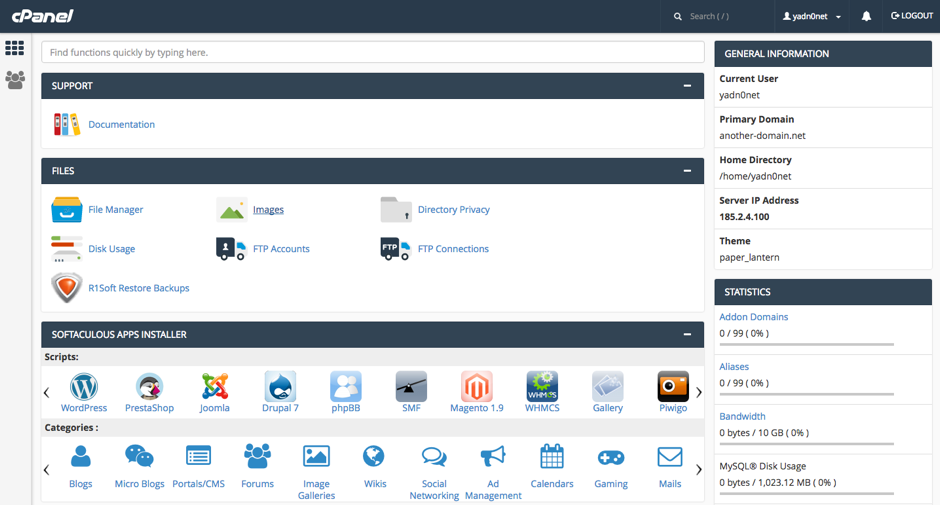
This article will examine the Transmission Control Protocols (TCP) as well as Internet Protocols (IP). We'll also cover the Application layer protocol and the Stateless Protocol. This information will help you understand how to use and implement network protocols. You will also learn about the history and function of each protocol.
Transmission Control Protocol
TCP/IP is a combination of the Internet Protocol (IP) and Transmission Control Protocol (TCP). The IP is the layer that determines how packets move through a network and the TCP is the layer that ensures a reliable transmission of data across Internet-connected networks. TCP inspects packets for potential errors and makes requests to retransmit if necessary. This allows any computer with an Internet connection to communicate with another.
TCP protocol can help reduce latency. A delay in acknowledgment from a receiving device can lead to loss of data. TCP data packets can be grouped into segments or component groups. TCP protocol demands that each segment contain a checksum fields to ensure that no two packets can be identical. If the checksum fields are corrupted, then the destination will not transmit an ACK.

Internet Protocol
Transmission Control Protocol (TCP), which is one the main protocols within the suite, is one of several Internet protocols. It was used initially in network implementation. It complemented the Internet Protocol. TCP/IP is the collective name of all the protocols. TCP is a data protocol used to facilitate communication over long distances.
The difference between TCP and IP lies in the way they work. TCP and IP are both connectionless. They act as datagram services. TCP however, is more reliable. It establishes consistent and reliable communication sessions. Although IPv4 is the most popular version of the Internet Protocol (IPv4), IPv6 is growing in popularity for private and public networks. This brings new features and challenges to administrators.
Application layer protocols
TCP/IP Protocol stack has many layers. Each layer is responsible for its own rules and responsibilities. Each layer exchanges data by agreeing how to pass information from one another. Each layer is made up of many components. The protocols that make up each layer are like a stack of blocks. The protocols are sometimes called stacks because they are organized in layers that are related.
The top layer of TCP/IP is called the application layer. It specifies protocols used in application processes. This layer facilitates communication between applications and networks by providing access to global information. It also helps with communication synchronization and resource availability. By connecting to remote servers, users can access the World Wide Web and receive messages.

Protocol of statelessness
Stateful protocols require that a server holds certain information to allow data to be sent. This is a necessity for computer applications. Without a server, a phone can't browse the internet. The server then handles the client's requests. Different protocols have different levels or dependency on each other. Stateless protocols don't have this dependency so the load on the server is lower.
Stateless protocols consume less information than stateful protocol, making them more efficient in terms of resources. Stateless protocols have their limitations. A stateless protocol may not be suitable in all cases. It may not be capable of identifying the source of spam messages, for example.
FAQ
What is responsive web design?
Responsive Web Design is a method of designing responsive websites. It allows content to display on all devices (desktop computers, tablets and smartphones), so that it can be viewed easily on any device. This allows users to view a website on one device simultaneously but still access other features such as navigation menus, buttons, etc. RWD is designed to ensure that a user can view a site on any size screen.
Consider, for instance, that you're building a website for an eCommerce company and your products are sold primarily online. It is important to ensure that your website can be accessed on any device, including a smartphone.
A responsive site will automatically adjust its layout based on the device being used to view it. It will appear the same as a regular desktop website if you view it on your laptop. It will be different if the page is viewed from your phone.
This means that you can create a single website that looks great on every type of device.
How To Make A Static Web Site
Two options are available when you create your first static web site.
-
Content Management System (a.k.a. WordPress: Download this software and install it to your computer. This software can then be used to create an indispensable website.
-
How to Create a Static HTML Website. In this instance, you will need to write your HTML/CSS codes. It's not hard to do if you already understand HTML.
Consider hiring an expert to build your large website.
But starting, you should probably go with option 2.
How do I create a free website?
This will depend on the type and purpose of your website. Do you want to sell online products, start a blog, build a portfolio, or both?
You can make an essential website using only HTML and CSS (a combination of HyperText Markup Language and Cascading Style Sheets). While it's possible to create a simple website using HTML and CSS, most web developers recommend using a WYSIWYG editor such as Dreamweaver or Frontpage.
If you don't have experience designing websites, hiring a freelance developer might be the best option. They can help you create a custom website based on your needs.
Freelance developers can charge either an hourly or a flat fee. It depends on the amount of work that they do in a given time frame.
For example, you might pay $50-$100 an hour to a company. Larger projects will usually attract higher rates.
Many freelance websites also list open jobs. You can search there before you contact potential developers directly.
What should I include?
These should all be included in your portfolio.
-
Exemplaires of previous work
-
If applicable, links to your website
-
Links to your blog.
-
These are links to social media sites.
-
You can also find links to other designers' portfolios online.
-
Any awards that you have received.
-
References.
-
Take samples of your work.
-
Here are some links that will show you how to communicate with your clients.
-
These links show that you are open to learning new technologies.
-
Links showing that you're flexible.
-
Links that show your personality
-
Videos showing your skills.
Where can I locate freelance web developers
Many places have freelance web developers and designers. Here are some of the best options:
Freelance sites
These websites offer job listings for freelancers. Some sites require specific skills, while others may not care about the type of work that you do.
Elance is a great place to find graphic designers, programmers and translators.
oDesk has similar features, but they focus on software development. They have job opportunities in PHP. Perl. Java. C++. Python. JavaScript. Ruby. Android. And.NET developers.
oWOW is another good option. Their site focuses on graphic and web designers. They offer many services, including video editing, programming, SEO, and social media marketing.
Online forums
Many forums allow members to post jobs and advertise themselves. DeviantArt, for web developers, is one example. If you search "web developer" in the search bar, you will see a list of threads where people are looking for someone to help them with their websites.
How much do web developers make?
A website is a project you can work on for your own money. You'll likely make $60-$80 an hr. But if you want to charge a lot more, you should consider becoming an independent contractor. You could potentially charge anywhere from $150-200 per hour.
Are I more likely to be hired for a job as a Web Developer if my portfolio is good?
Yes. When you are applying for a job as a web developer or designer, a portfolio is crucial. The portfolio must show examples of your skills and experience.
Portfolios typically include examples of past projects. These can be anything that shows off your skill set. You should have everything in your portfolio, including mockups.
Statistics
- It enables you to sell your music directly on your website and keep 100% of the profits. (wix.com)
- In fact, according to Color Matters, a signature color can boost brand recognition by 80%. There's a lot of psychology behind people's perception of color, so it's important to understand how it's used with your industry. (websitebuilderexpert.com)
- At this point, it's important to note that just because a web trend is current, it doesn't mean it's necessarily right for you.48% of people cite design as the most important factor of a website, (websitebuilderexpert.com)
- The average website user will read about 20% of the text on any given page, so it's crucial to entice them with an appropriate vibe. (websitebuilderexpert.com)
- Is your web design optimized for mobile? Over 50% of internet users browse websites using a mobile device. (wix.com)
External Links
How To
What is website hosting?
Website hosting describes where visitors go when they visit a site. There are two types:
-
The cheapest option is shared hosting. Your website files will reside on a server belonging to someone else. Customers visit your website and send their requests over the Internet to this server. The server owner then forwards the request to you.
-
Dedicated hosting - This is the most expensive option. Your website resides entirely on one server. Your traffic stays private as no other websites can share the same server.
Because shared hosting is more affordable than dedicated hosting, most businesses opt for it. You can use shared hosting if the company owns the server to provide the resources required for your website.
Each option has its pros and cons. These are some of the major differences between them.
The pros of shared hosting:
-
Lower Cost
-
Easy to Set Up
-
Regular Updates
-
It can be found on many web hosting companies
Hosting shared can be as low as $10 per month. However, this price typically includes bandwidth. Bandwidth refers the data that you can transfer over the Internet. So even if you only upload photos to your blog, you may still pay extra money for high amounts of data transferred through your account.
You'll soon realize why your old host cost so much once you get started. The majority of shared hosts offer limited customer support. You'll be on your way after they walk you through setting it up.
Providers that offer 24-hour customer support are worth looking into. They will help you deal with any issues that arise while your sleeping.
Cons of dedicated hosting
-
More Expensive
-
Less Common
-
Requires special skills
With dedicated hosting, you get everything you need to run your website. You don't need to worry about bandwidth usage or RAM (random access memory).
This means that upfront, you'll need to spend a bit more. You'll soon realize that your business is self-sufficient once it's online. You'll become an expert at managing your servers.
Which Is Better For My Business, So Which Is Better?
This depends on the kind of website that you want. If you're selling products only, shared hosting might work best. It is easy to set-up and manage. Because you share a server, you will most likely receive frequent updates.
However, dedicated web hosting is the best way to build a community around you brand. Instead of worrying about traffic, you can concentrate on building your brand.
Bluehost.com has both. They offer unlimited monthly data transfers and 24/7 support. You can also register domain names for free.